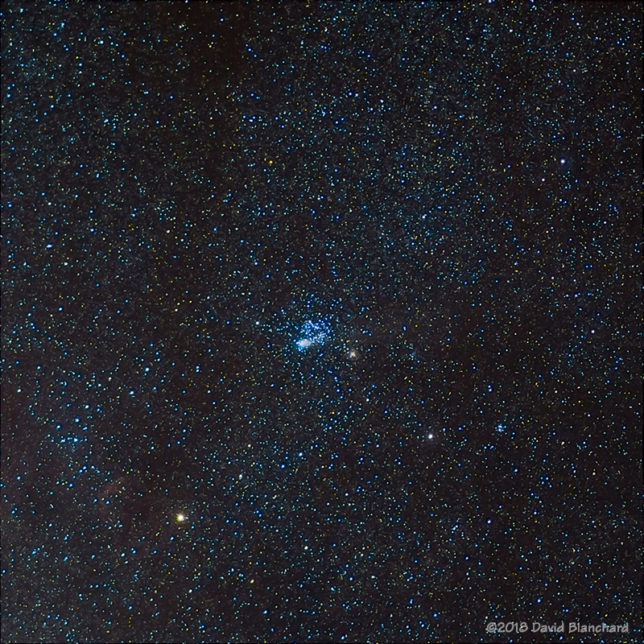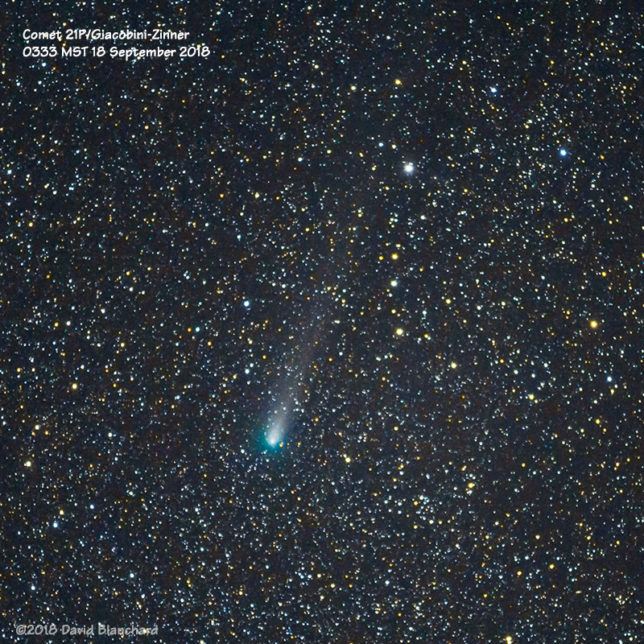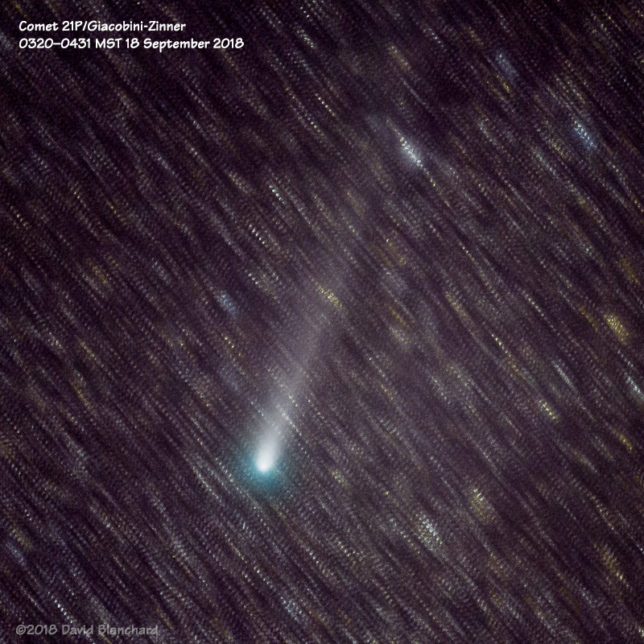Comet 21P/Giacobini-Zinner is a periodic comet with an orbital period of 6.6 years. It made its closest approach to Earth on September 10–11 when it was ~58 million kilometers distant. At that time it brightened to around magnitude 7–which is still too dim to be an unaided eye object. Binoculars, telescopes, or long-exposure photography are still necessary.
My first attempt to capture images was on September 15 when the comet passed in front of M35. Oddly enough, I was unable to clearly see the comet because of the large number of stars in the star cluster.

My second attempt was a few days later (September 18) after it had moved away from M35. This was a better setup. But my imaging wasn’t great. Perhaps the sky wasn’t as clear as I thought it was or my technique isn’t as good as I think it is. Either way, the results aren’t as sharp and clear as I hoped.

Still, it was fun—especially the second attempt. After setting up the tripod, aligning the equatorial mount, and getting [almost] sharp focus I let the camera run for over an hour taking 120 second exposures (followed by 120 seconds of Long Exposure Noise Reduction, LENR).
I was surprised (but should not have been) at how much movement there was in the position of the comet in just a bit over an hour. The video covers the time period from 0320 to 0431 MST.
I also used Deep Sky Stacker (DSS) to stack the individual images in which the software keeps the comet sharp while the stars have trails. Because of the 2-minute gaps between images, there are also gaps in the star trails.

During the 1-hour period in which the camera was on “autopilot” I was able to lie back and stare up at the sky. I saw about two dozen meteors during that period and many of them seemed to have origins near the constellation Orion. The Orionid meteor shower doesn’t peak for another several weeks (active from September 23rd to November 27th with a peak on October 21–22) but it’s possible these were early arrivals of that meteor shower.